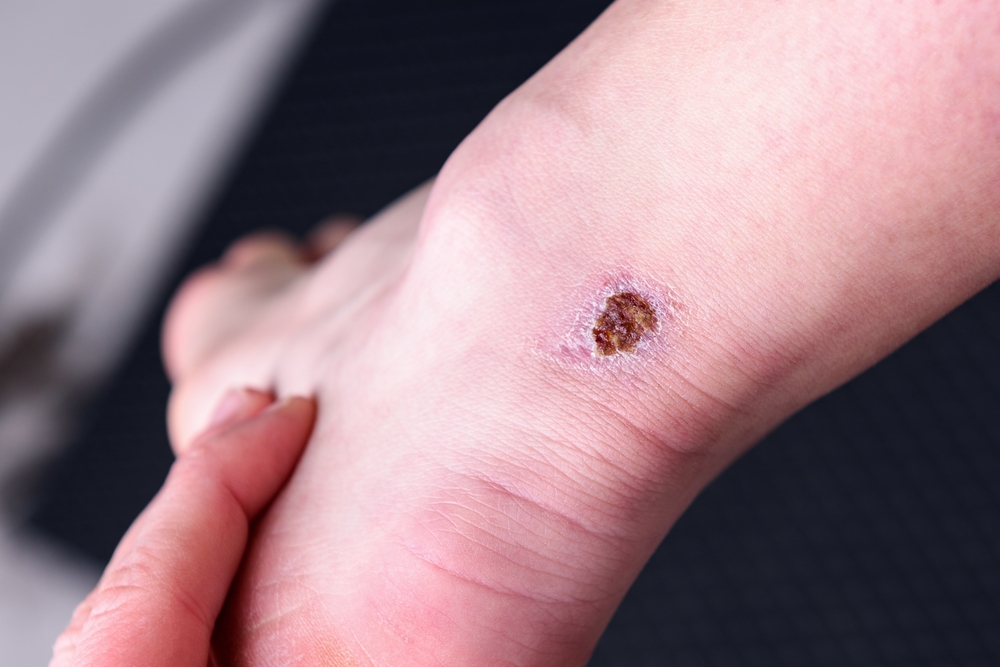Wounds are an inevitable part of life, whether from a minor scrape, a surgical incision, or an accidental cut. But while many wounds heal naturally with time and proper care, others can become infected, leading to complications and delayed recovery. Understanding the causes of an infected wound is essential in preventing such outcomes and ensuring effective healing. In this blog post, we’ll explore how wounds become infected, the different types of microorganisms involved, and the conditions that make the body more vulnerable to wound infections.
What Is a Wound Infection?
A wound infection occurs when bacteria, viruses, fungi, or other pathogens invade a break in the skin and multiply, overwhelming the body’s immune response. While our skin is a natural barrier against harmful microorganisms, an open wound exposes the internal tissues to outside contaminants, which can lead to infection.
Infections can range from mild to severe. In minor cases, the wound may simply become red and swollen. In more serious cases, an infection can spread to the bloodstream (sepsis), bones (osteomyelitis), or internal organs, resulting in life-threatening conditions.
Before diving deeper into prevention, let’s take a detailed look at the causes of an infected wound and what puts people at risk.
-
Bacterial Contamination
Bacteria are by far the most common cause of wound infections. Our skin, environment, and even medical tools can introduce bacteria into a wound. Some of the most frequent culprits include:
- Staphylococcus aureus (including MRSA)
- Pseudomonas aeruginosa
- Escherichia coli
- Streptococcus pyogenes
These bacteria can rapidly colonize the wound site, particularly if the area isn’t properly cleaned or covered. Staph infections are particularly concerning in healthcare settings and post-surgical wounds.
-
Poor Wound Hygiene
Improper or inadequate wound care is one of the primary causes of an infected wound. When wounds are not cleaned soon after injury or dressing changes are skipped, bacteria and dirt can accumulate, creating the ideal environment for an infection to take hold.
Common mistakes include:
- Not washing hands before touching the wound
- Reusing old bandages
- Failing to cleanse the area thoroughly
- Using non-sterile tools or materials
Keeping the wound clean and protected from external contaminants is key to preventing infection.
-
Foreign Objects or Debris in the Wound
Any particles left inside a wound, like dirt, glass, splinters, or metal fragments, can irritate the tissue and harbor bacteria. These foreign bodies can create a localized area for bacteria to thrive, especially in puncture wounds where cleaning is more difficult.
Even small, invisible particles can lead to infection if not properly removed during the initial cleaning process.
-
Poor Circulation
Good blood flow is essential for transporting oxygen, immune cells, and nutrients to the wound site. Poor circulation can hinder the body’s natural healing response, allowing infections to take hold more easily.
Common causes of poor circulation include:
- Diabetes
- Peripheral artery disease (PAD)
- Smoking
- Blood clots
In such cases, even a minor wound can become chronic and prone to infection due to limited immune defense.
-
Compromised Immune System
A weakened immune system is another significant factor behind wound infections. Individuals with chronic illnesses, undergoing chemotherapy, or taking immunosuppressive medications are more susceptible to bacterial and fungal infections.
With a reduced capacity to fight off invading organisms, even small wounds can become infected quickly and may take longer to heal.
-
Moist or Warm Environments
Warmth and moisture accelerate bacterial growth. If a wound is kept too moist (from excessive sweating, wet dressings, or environmental exposure), bacteria can multiply rapidly and infiltrate the tissue.
Though a slightly moist environment is ideal for healing, too much can cause skin maceration and breakdown, opening the door to infection.
-
Tissue Damage or Necrosis
Dead or severely damaged tissue (known as necrotic tissue) provides a breeding ground for bacteria. In wounds where tissue dies due to trauma, burns, or pressure (like bedsores), the body’s immune response is less effective, and the damaged area becomes vulnerable.
This is why wound debridement—removing dead tissue—is often necessary to prevent or treat infection.
-
Inadequate Oxygen Supply
Oxygen plays a critical role in cellular repair and immune defense. When there is insufficient oxygen (due to anemia, lung disease, or vascular problems), the wound healing process slows down, and the risk of infection rises.
In some clinical cases, treatments like hyperbaric oxygen therapy (HBOT) are used to improve oxygenation and speed healing.
-
Underlying Health Conditions
Certain health conditions are directly linked to delayed wound healing and increased infection risk. These include:
- Diabetes: High blood sugar levels impair circulation, reduce immune efficiency, and encourage bacterial growth.
- Cancer: Tumors and treatment regimens can weaken the immune system.
- Autoimmune diseases: Conditions like lupus or rheumatoid arthritis often require immunosuppressive medications.
These conditions not only increase the chance of infection but also complicate treatment and prolong recovery.
-
Improper Dressing or Wound Sealing
The type of dressing used can either help protect the wound or contribute to infection. Non-breathable or incorrectly applied dressings can trap moisture, heat, and bacteria. Conversely, leaving a wound uncovered can expose it to airborne pathogens and physical contaminants.
Medical guidance is often necessary to choose the right type of dressing for different wound types (e.g., hydrocolloid, gauze, antimicrobial dressings).
-
Delayed Treatment or Diagnosis
Ignoring early signs of infection or postponing medical care can allow bacteria to penetrate deeper layers of skin and tissue. What starts as a minor wound can rapidly escalate into cellulitis, abscess formation, or systemic infections if not addressed promptly.
Some people might also misinterpret signs like redness or swelling as normal healing and delay treatment.
-
Surgical Site Infections (SSI)
Even in sterile environments, surgical wounds are not immune to infection. Surgical site infections can occur when:
- The surgical instruments are not adequately sterilized
- The wound is contaminated post-surgery
- The patient has risk factors like obesity, diabetes, or smoking
Proper post-operative wound care is essential for minimizing the risk of SSIs.
Signs That a Wound May Be Infected
Understanding the causes of an infected wound is important, but recognizing the signs is just as critical. Look out for:
- Persistent or worsening pain
- Redness that spreads
- Swelling and warmth
- Foul-smelling discharge or pus
- Fever or chills
- Wound that doesn’t seem to heal or worsens over time
If any of these symptoms are present, it’s important to seek medical care immediately.
Preventing Wound Infections: Best Practices
Preventing infection begins with proper wound care and awareness of risk factors. Here’s what you can do:
- Clean the wound immediately – Use clean water or saline and mild soap.
- Apply an antiseptic – Choose an appropriate topical agent like iodine, silver, or antibiotic cream.
- Cover the wound – Use sterile dressings and change them as instructed.
- Watch for signs of infection – Redness, pain, or pus should be taken seriously.
- Manage chronic conditions – Keep diabetes, blood pressure, and other illnesses under control.
- Seek timely care – If the wound is deep, contaminated, or slow to heal, get professional help.
You may also read: What are some risk factors of infected Wound?
Final Thoughts
There are many causes of an infected wound, and they range from external factors like bacterial contamination to internal issues such as chronic illnesses and poor circulation. While some infections can’t be entirely prevented, knowing what increases the risk allows individuals to take proactive steps to protect their health.
Prompt cleaning, vigilant care, and recognizing early signs of trouble are your best tools in preventing infection. Whether you’re dealing with a scraped knee or a post-surgical incision, don’t underestimate the importance of proper wound care.
Stay informed, act early, and when in doubt, reach out to a healthcare provider for guidance.



